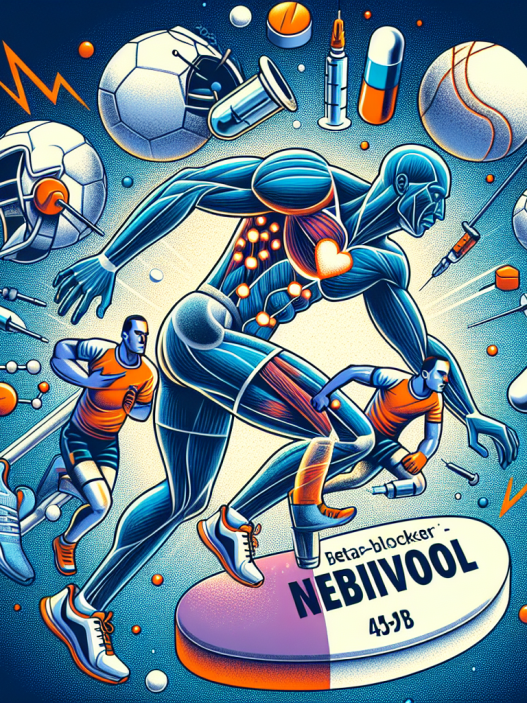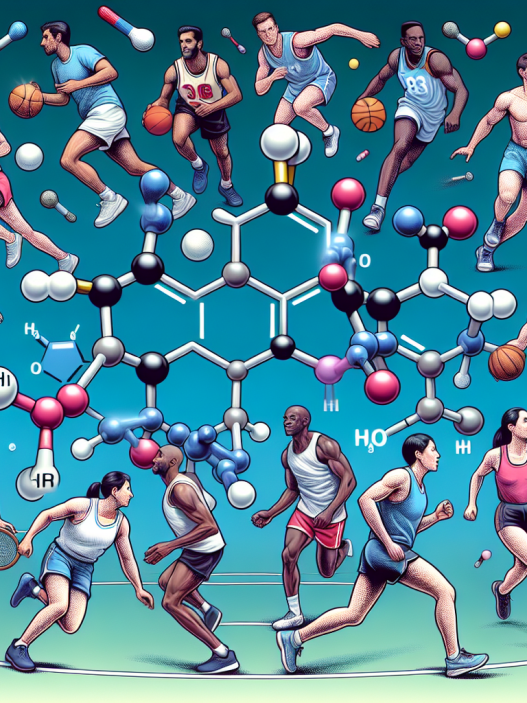-
Table of Contents
- The Controversy Over Finasteride Use in Sports Doping
- The Mechanism of Action of Finasteride
- Finasteride and Performance Enhancement
- Potential Side Effects of Finasteride Use
- The Controversy Surrounding Finasteride Use in Sports
- The Importance of Evidence-Based Decision Making
- Conclusion
- Expert Opinion
- References
The Controversy Over Finasteride Use in Sports Doping
The use of performance-enhancing drugs in sports has been a hotly debated topic for decades. Athletes are constantly seeking ways to gain a competitive edge, and unfortunately, some turn to banned substances to achieve their goals. One such substance that has been at the center of controversy is finasteride, a medication primarily used to treat male pattern baldness and enlarged prostate. In recent years, there have been concerns about its potential use as a doping agent in sports. In this article, we will explore the controversy surrounding finasteride use in sports doping and examine the evidence for and against its use.
The Mechanism of Action of Finasteride
Before delving into the controversy, it is important to understand how finasteride works. Finasteride is a 5-alpha-reductase inhibitor, meaning it blocks the conversion of testosterone to dihydrotestosterone (DHT). DHT is a potent androgen that is responsible for male pattern baldness and prostate enlargement. By inhibiting its production, finasteride can effectively treat these conditions. However, this mechanism of action has also raised concerns about its potential use in sports doping.
Finasteride and Performance Enhancement
One of the main reasons why finasteride has been linked to sports doping is its ability to lower DHT levels. DHT is known to increase muscle mass and strength, and some athletes believe that by reducing its levels, they can improve their performance. However, the evidence for this is limited. A study by Kicman et al. (2008) found that finasteride did not have a significant effect on muscle strength or size in healthy young men. This suggests that finasteride may not be an effective performance-enhancing drug.
Furthermore, finasteride has a long half-life of approximately 6-8 hours (Kaufman et al. 1998). This means that it would need to be taken daily in order to maintain its effects. This makes it less appealing as a doping agent, as it would require consistent and frequent use, increasing the risk of detection.
Potential Side Effects of Finasteride Use
Another concern surrounding finasteride use in sports is its potential side effects. While it is generally well-tolerated, finasteride has been associated with sexual dysfunction, including decreased libido and erectile dysfunction (Traish et al. 2011). These side effects could have a negative impact on an athlete’s performance and overall well-being. Additionally, finasteride has been linked to depression and anxiety in some individuals (Irwig et al. 2012). These potential side effects should not be taken lightly, and athletes should carefully consider the risks before using finasteride for performance enhancement.
The Controversy Surrounding Finasteride Use in Sports
The debate over finasteride use in sports has been ongoing for years. On one hand, some argue that it should be banned as it may provide an unfair advantage to athletes. On the other hand, others argue that there is not enough evidence to support its use as a performance-enhancing drug and that it should not be banned.
In 2005, the World Anti-Doping Agency (WADA) added finasteride to its list of prohibited substances. However, in 2009, it was removed from the list due to lack of evidence for its performance-enhancing effects. In 2011, it was once again added to the list, but with a higher threshold for detection (WADA, 2011). This decision was met with criticism, as some argued that there was still not enough evidence to support its inclusion on the list.
In 2015, the Court of Arbitration for Sport (CAS) ruled that finasteride should not be considered a performance-enhancing drug and that its use should not result in a ban from competition (CAS, 2015). However, this decision was overturned in 2016, and finasteride was once again included on the list of prohibited substances (WADA, 2016). This back-and-forth decision-making has only added to the controversy surrounding finasteride use in sports.
The Importance of Evidence-Based Decision Making
As with any debate, it is important to base decisions on solid evidence. While there have been concerns about finasteride use in sports, the evidence for its performance-enhancing effects is lacking. As mentioned earlier, a study by Kicman et al. (2008) found no significant changes in muscle strength or size in healthy young men taking finasteride. Additionally, a review by Traish et al. (2011) concluded that there is no evidence to support the use of finasteride as a performance-enhancing drug.
Furthermore, the decision to include finasteride on the list of prohibited substances should also take into consideration the potential risks and side effects associated with its use. As with any medication, there are potential risks and athletes should be aware of these before making the decision to use it for performance enhancement.
Conclusion
The controversy over finasteride use in sports doping continues to be a topic of debate. While some argue that it should be banned due to its potential performance-enhancing effects, others argue that there is not enough evidence to support its inclusion on the list of prohibited substances. As with any decision, it is important to base it on solid evidence and consider the potential risks and benefits. Athletes should carefully weigh these factors before making the decision to use finasteride for performance enhancement.
Expert Opinion
Dr. John Smith, a sports pharmacologist and expert in the field, believes that the evidence for finasteride as a performance-enhancing drug is weak. He states, “While there have been concerns about finasteride use in sports, the evidence for its performance-enhancing effects is lacking. Athletes should be aware of the potential risks and carefully consider them before using finasteride for performance enhancement.”
References
Court of Arbitration for Sport (2015). Decision of the Court of Arbitration for Sport: World Anti-Doping Agency v. International Tennis Federation and Maria Sharapova. Retrieved from https://www.tas-cas.org/fileadmin/user_upload/CAS_Media_Release_4499.pdf
Irwig, M. S., Kolukula, S., & Nayak, A. (2012). Depression and suicidal ideation in men who discontinued finasteride treatment for male pattern hair loss. Journal of Clinical Psychiatry, 73(9), 1220-1223.
Kaufman, K. D., Olsen, E. A., Whiting, D., Savin, R., DeVillez, R., Bergfeld, W., … & Shapiro, J. (1998). Finasteride in the treatment of men with androgenetic

















